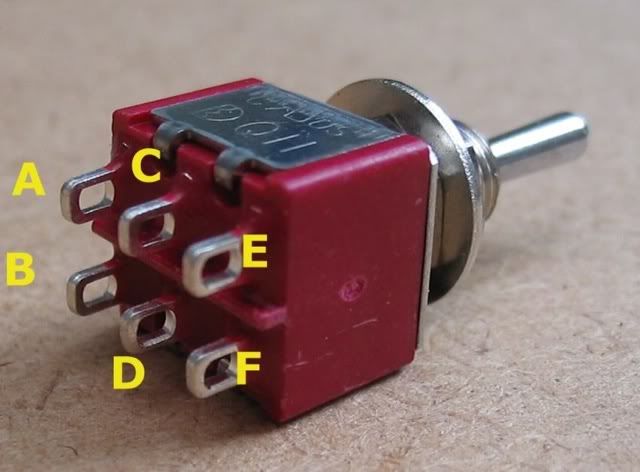A friend of mine wants to build a guitar with one pickup and no knobs at all and I told him that pickups don't produce current without a load present. This got me thinking though, he could simulate a resistive load using a DPDT switch to activate the load full on/full off couldn't he?
Using this as a diagram:

He could, say wire the pickup hot to the B and pickup cold to the A, then run the hot output from D and cold output from C. And using a 500k resistor, he would put it.... umm, between B and A? And putting the switch to the other side would activate the terminals with nothing attached, effectively turning the guitar off.
OR, he could do something cool like jumper B to F and A to E and put a 250K between E and F to simulate a different pot load with the switch in the opposite position. Or simulate a 500k pot turned halfway down by putting a 250K between F and E AND another 250K between F and D. This is a real brain teaser, but I'm convinced that it could be done. Right?
Using this as a diagram:

He could, say wire the pickup hot to the B and pickup cold to the A, then run the hot output from D and cold output from C. And using a 500k resistor, he would put it.... umm, between B and A? And putting the switch to the other side would activate the terminals with nothing attached, effectively turning the guitar off.
OR, he could do something cool like jumper B to F and A to E and put a 250K between E and F to simulate a different pot load with the switch in the opposite position. Or simulate a 500k pot turned halfway down by putting a 250K between F and E AND another 250K between F and D. This is a real brain teaser, but I'm convinced that it could be done. Right?
Comment